Taking your own passport photo can seem daunting, but it’s actually quite simple and cost-effective when you know the guidelines. At dfphoto.net, we provide you with a detailed, step-by-step approach for capturing the perfect photo at home, meeting all official requirements and avoiding application delays, ensuring a seamless passport application experience. Whether you’re after convenience, cost savings, or simply prefer to control the outcome, learning to take your own passport photo is a valuable skill. Let’s dive into mastering DIY passport photography, exploring passport photo guidelines, and discovering easy photo editing techniques!
1. Understanding U.S. Passport Photo Requirements
What exactly are the prerequisites for a valid U.S. passport photo?
To ensure your passport application proceeds without a hitch, your photo must adhere to specific guidelines. Getting familiar with these details beforehand will save you from unnecessary delays. According to the U.S. Department of State, a non-compliant photo is a leading cause of passport application delays.
Here’s a breakdown of the essential requirements:
| Criteria | Details |
|---|---|
| Size and Dimensions | The photo must be 2×2 inches (51×51 mm). |
| Head Size | The head size, measured from the bottom of the chin to the top of the head, should be between 1 inch and 1 3/8 inches (25 mm – 35 mm). |
| Background | The background must be plain white or off-white. It should be free from shadows, patterns, or any other distracting elements. |
| Pose | You must face the camera directly with a neutral expression. Both eyes should be open, and your mouth should be closed. No smiling, frowning, or any other exaggerated expressions are allowed. |
| Attire | You cannot wear hats, glasses, or uniforms unless worn daily for religious or medical reasons. For religious attire, you’ll need a signed statement verifying its daily use. For medical reasons, a signed doctor’s statement is required. |
| Print Quality | The photo should be printed on matte or glossy photo-quality paper. Avoid any defects such as creases, smudges, or holes. |
| Digital Submission | If submitting online, the photo must be in JPEG format. Dimensions should allow for space around the head and shoulders (at least 600 x 600 pixels). The file size should be between 54 KB and 10 MB. |
Knowing these requirements is the first step in ensuring your passport photo is accepted.
2. Essential Gear for Your DIY Passport Photo Shoot
What are the must-have tools to get started?
To take a great passport photo at home, gather the right equipment. The good news is you probably already have most of what you need. Equipping yourself with these tools will ensure a smooth and successful photo session.
Here’s a checklist of essential gear:
- Camera: A smartphone with a decent camera or a digital camera will work perfectly.
- Tripod (Optional): A tripod helps keep your camera steady, ensuring a clear, sharp photo. If you don’t have one, a stack of books or any stable surface can work in a pinch.
- Plain White or Off-White Background: A clean wall, a white sheet, or a large piece of white paper can serve as your background.
- Good Lighting: Natural daylight is ideal. Position yourself near a window for soft, even lighting.
Having the right gear sets the stage for a successful passport photo shoot.
3. Setting Up the Perfect Background
How do I create a compliant background at home?
The background of your passport photo is crucial, as it needs to be plain and free from distractions. Setting up a proper background ensures your photo meets official requirements. According to the U.S. Department of State, the background is one of the most common reasons for photo rejection.
Follow these steps to set up the perfect background:
- Choose a Plain Wall: Select a wall that is white or off-white. Make sure it’s free of any patterns, textures, or decorations.
- Ensure Even Lighting: Avoid shadows on the background. If using natural light, position yourself so that the light is evenly distributed.
- Use a White Sheet (If Necessary): If you don’t have a suitable wall, hang a white sheet or use a large piece of white paper as a backdrop.
- Remove Distractions: Ensure there are no objects or lines in the background. A clean, uncluttered background is essential.
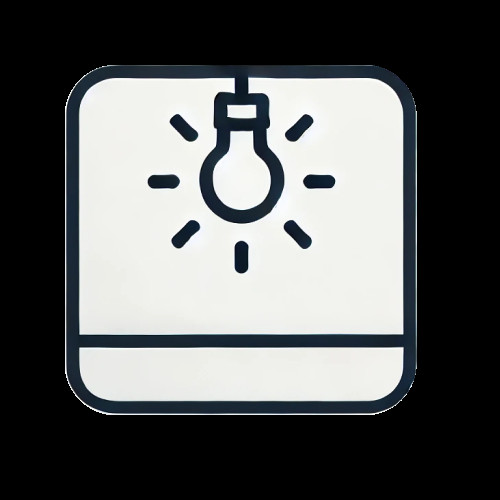 White backdrop for passport photo to follow government standards
White backdrop for passport photo to follow government standards
Creating the right background is a simple yet vital step in taking an acceptable passport photo.
4. Finding the Ideal Spot and Lighting
Where should I position myself for the best results?
Proper positioning and lighting are essential for a well-lit, clear passport photo. Correct placement ensures that your features are visible and that the photo meets the required standards. According to professional photographers, optimal lighting is key to a good portrait.
Here’s how to find your perfect spot:
- Distance: Stand about 3-4 feet away from the camera. This distance helps to avoid distortion and ensures your entire face is in focus.
- Centering: Make sure you are centered in the frame, facing the camera directly. Your face should be fully visible.
- Lighting: Use natural light by positioning yourself near a window. Avoid direct sunlight, which can cause harsh shadows. Diffused light is best for a soft, even look.
- Avoid Shadows: Check for any shadows on your face or background. Adjust your position to eliminate shadows.
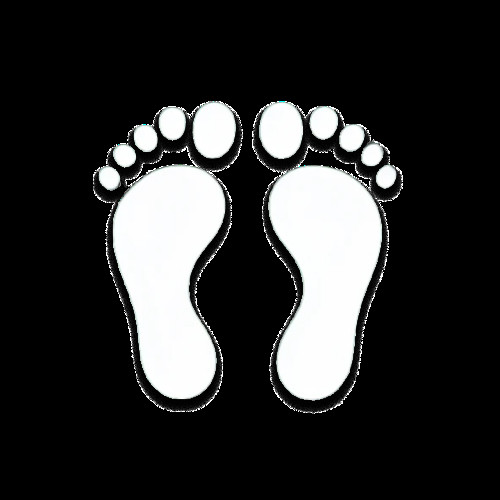 Proper spot for taking passport photo with ideal lighting
Proper spot for taking passport photo with ideal lighting
Finding the right spot and optimizing your lighting can significantly improve the quality of your passport photo.
5. Mastering the Neutral Pose
How can I achieve the required neutral facial expression?
Your facial expression is a critical aspect of your passport photo. A neutral expression ensures compliance and avoids any potential issues with your application. As per the U.S. Department of State, a neutral expression means no smiling, frowning, or raised eyebrows.
Follow these tips to master the neutral pose:
- Neutral Expression: Keep your face relaxed. Think of something calming to help you maintain a neutral expression.
- Eyes Open: Ensure your eyes are open and clearly visible. Avoid squinting or looking away from the camera.
- Mouth Closed: Keep your mouth closed. No smiling, laughing, or any other expression that involves opening your mouth.
- Head Position: Keep your head straight and level. Avoid tilting your head to either side or looking up or down.
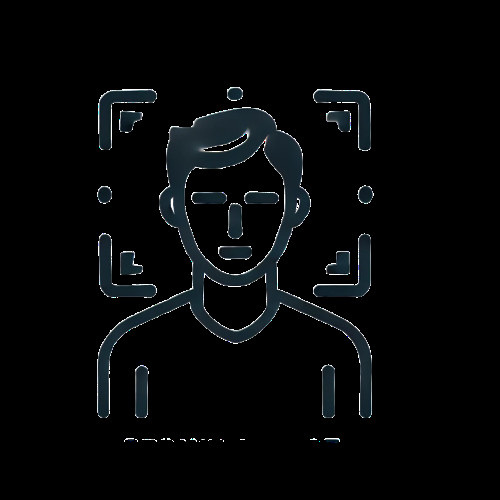 Demonstration of a neutral expression for taking passport photo
Demonstration of a neutral expression for taking passport photo
Mastering the neutral pose might feel unnatural, but it’s essential for a compliant passport photo.
6. Dress Code Essentials for Passport Photos
What should I wear (and avoid wearing) for my passport photo?
Your attire in a passport photo should be simple and not distracting. Following the dress code ensures that the focus remains on your face and that you comply with official requirements. According to passport photo guidelines, certain items are prohibited.
Here’s what you need to know:
- No Glasses: Remove your glasses before taking the photo. If you must wear them for medical reasons, you’ll need a signed doctor’s statement.
- No Hats or Head Coverings: Avoid wearing hats or head coverings unless they are worn daily for religious or medical reasons. If worn for religious reasons, you’ll need a signed statement verifying daily use. For medical reasons, a signed doctor’s statement is required.
- Avoid Uniforms: Do not wear any uniforms. Casual, everyday clothing is best.
- Keep it Simple: Choose clothing that is comfortable and does not obscure your face or neck.
 Following the dress code guidelines for passport photos
Following the dress code guidelines for passport photos
Choosing the right attire helps ensure your passport photo is accepted without any issues.
7. Capturing the Perfect Shot
How do I take the photo to ensure it meets all requirements?
Taking the actual photo involves a few key steps to ensure it meets all passport photo requirements. Proper technique and attention to detail are essential. Professional photographers recommend using a timer or asking someone for help to ensure the best results.
Follow these steps to capture the perfect shot:
- Use a Timer or Get Help: Set your camera timer or ask a friend or family member to take the photo for you. Avoid selfies, as they can be difficult to align properly.
- Review the Photo: After taking the photo, review it to make sure it’s clear, well-lit, and meets all the requirements. Check for any shadows, glare, or other issues.
- Take Multiple Shots: Take several photos to give yourself options. This increases the chances of getting a perfect shot.
- Maintain Consistency: Ensure each photo is taken under the same conditions to maintain consistency.
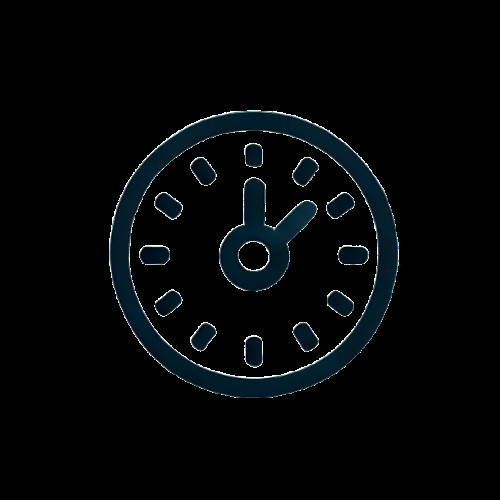 Snapping a high-quality passport photo
Snapping a high-quality passport photo
Capturing the perfect shot requires patience and attention to detail, but the results are well worth the effort.
8. Sizing and Quality Checks
How do I ensure my photo meets the size and resolution standards?
After taking your photo, it’s essential to check that it meets the specific size and quality standards required for passport photos. Attention to detail ensures your photo will be accepted. The U.S. Department of State emphasizes the importance of accurate sizing and resolution.
Follow these steps for sizing and quality checks:
- Size: Make sure the photo is 2×2 inches (51×51 mm).
- Resolution: Ensure the resolution is 300 pixels per inch for a clear, high-quality image.
- Crop: Use the U.S. Department of State’s Photo Tool to crop your photo to the correct dimensions. This tool helps ensure your photo meets all the necessary requirements.
- Print Quality: If printing, use matte or glossy photo paper. Make sure the print is free from any defects such as creases, holes, or smudges.
- No Editing or Photocopies: Do not edit the photo in any way. Avoid using filters or Photoshop. Submit the original photo.
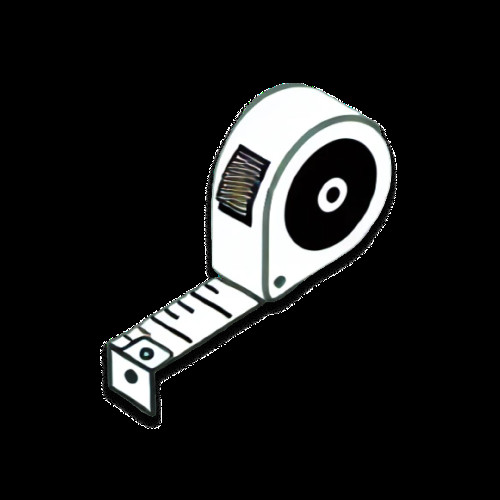 Verify size and quality of photo with a government tool
Verify size and quality of photo with a government tool
Checking the size and quality of your passport photo is crucial to avoid any issues with your application.
9. Printing and Submitting Your Passport Photo
What are the best practices for printing and attaching my photo?
The final step is printing and submitting your passport photo. Proper printing and attachment ensure your photo is presented correctly. Following these guidelines will help you complete the process smoothly.
Here’s what you need to do:
- High-Quality Paper: Use matte or glossy photo paper for printing.
- No Defects: Ensure the print is spotless—no creases, holes, or smudges.
- Attach Properly: Make sure the photo is securely attached to your application. Use glue or double-sided tape to affix the photo to the designated area on the form.
- Follow Instructions: Follow the specific instructions provided with your passport application for attaching the photo.
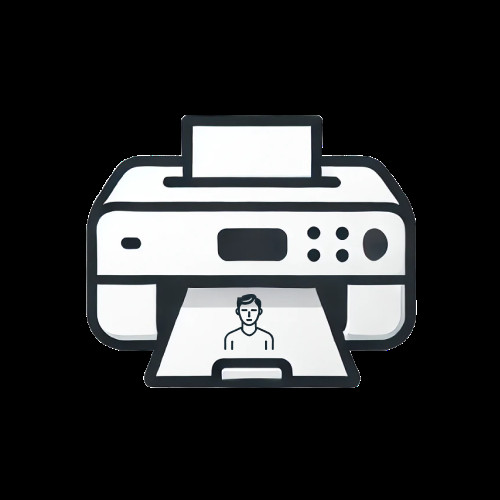 Print and prepare passport photo for submission
Print and prepare passport photo for submission
Proper printing and submission are the final steps in ensuring your passport photo is accepted.
10. Passport Photos for Online Renewal
What are the unique requirements for digital submissions?
If you’re renewing your passport online, there are specific requirements for digital photo submissions. Understanding these ensures your online application proceeds smoothly. The U.S. Department of State provides detailed guidelines for digital passport photos.
Here are the key requirements for online passport renewal photos:
- Dimensions: Allow for ample space around your head and shoulders. The photo should be at least 600 x 600 pixels.
- Color: The photo must be in color. Black and white photos are not accepted.
- Format: The file must be in JPEG format (.jpg or .jpeg).
- File Size: The file size should be between 54 KB and 10 MB.
- Compression: Avoid compressing the photo and use the highest resolution possible.
- Pose: Face the camera directly with a neutral expression, open eyes, and a closed mouth.
- Shadows and Lighting: Ensure even lighting with no shadows.
- Background: Use a plain white or off-white background with no textures or objects.
- Attire, Hats, and Glasses: Follow the same guidelines as for printed photos: no uniforms, hats, glasses, or head coverings unless for religious or medical reasons.
When uploading your photo, the online tool will automatically crop it to the perfect size, so you don’t have to worry about that. Every photo is reviewed by a human staff member during processing. If there is an issue, you will receive an email requesting a new photo.
11. Troubleshooting Common Errors
What should I do if I encounter issues during the online upload?
When uploading your passport photo online, you might encounter some common errors. Knowing how to troubleshoot these issues can save you time and frustration. The U.S. Department of State provides guidance on how to fix these errors.
Here are some common error messages and how to fix them:
| Error Message | How to Fix |
|---|---|
| “Background may not meet our requirements” | Ensure your background is plain white or off-white and that there are no textures, objects, or lines. Make sure there is ample space above and below your head so that the tool is able to crop your photo. |
| “Image compressed” | Re-upload your photo at a higher resolution. The file size might be too small. Check your camera settings and avoid using edited or texted photos, as they can compress automatically. |
| “Expression may be unnatural” | Ensure your eyes are open and your mouth is closed. Maintain a neutral expression. |
| “Head size or position may be incorrect” | The photo might have been taken from too far or too close. Upload a new photo taken from closer or farther away. |
| “Image quality may be poor” | Re-upload a photo with a larger file size that is not blurry and is in focus. |
| “Lighting or exposure may be incorrect” | Your photo might be under or overexposed. Take a new photo with natural, clear light. |
| “Internal server error” | Log out and reload the application after clearing your cookies or waiting several hours. You have 30 days to complete your application after starting. |
Addressing these common errors can help ensure a smooth online passport renewal process.
12. Alternative Options for Passport Photos
Where else can I get my passport photo taken if I can’t do it at home?
If taking your own passport photo at home isn’t feasible, there are several alternative options available. Knowing these options can help you find the most convenient solution. Many places offer passport photo services for a fee.
Here are some places where you can get your passport photo taken:
- Passport Acceptance Facilities: Some passport acceptance facilities offer on-site photo services. Use the Passport Acceptance Facility Search Page and check “Photo On-site” to find facilities near you.
- Professional Photo Studios: Professional studios offer high-quality passport photo services. They ensure that your photo meets all the requirements.
- Photo Booths: Photo booths are available in many public places. They provide quick and convenient passport photos.
- Pharmacies: Many pharmacies, such as CVS and Walgreens, offer passport photo services.
- Walmart: Walmart also provides passport photo services at their photo centers.
- Other Private Companies: Numerous private companies specialize in passport photos.
The price for a set of passport photos from these locations typically ranges from $8 to $20 (excluding professional studios). Quality and availability may vary, so it’s a good idea to read reviews of locations in your area.
13. Top Tips for a Successful Passport Photo
What are the best practices for taking a great passport photo?
To recap, here are some top tips for ensuring your passport photo is a success:
- Use a Recent Photo: Ensure the photo is less than six months old.
- Utilize the Photo Tool: Use the travel.state.gov Photo tool to automatically crop your photo.
- Maintain Distance: Stand about 3-4 feet away from the background to avoid shadows.
- Optimize Lighting: Use natural light by facing a window during the day for the best lighting.
- Stabilize Your Camera: Use a tripod or a stack of books to keep your camera steady.
- Remove Accessories: Don’t forget to remove your glasses (and hats, too).
- Neutral Expression: Keep your mouth closed and maintain a neutral expression.
- Use a White Sheet: If you don’t have a white, texture-free wall, use a white sheet as a backdrop.
- Review Requirements: Double-check all requirements before taking the photo to ensure compliance.
- Take Multiple Shots: Take several photos to give yourself options and increase the chances of getting a perfect shot.
14. Understanding Passport Photo Paper
Does the type of paper matter for passport photos?
Yes, the type of paper you use for printing your passport photo does matter. While the U.S. Department of State allows for both glossy and matte paper, it’s important to choose a high-quality photo paper that meets official guidelines.
Glossy Paper
- Pros:
- Vibrant Colors: Glossy paper tends to produce more vibrant and saturated colors, which can make the photo look more visually appealing.
- Smooth Finish: The smooth, reflective surface of glossy paper gives the photo a professional look.
- Cons:
- Glare: Glossy paper can produce glare, especially under bright light, which can obscure details in the photo.
- Fingerprints: The glossy surface is prone to fingerprints and smudges, which can affect the photo’s quality.
Matte Paper
- Pros:
- Reduced Glare: Matte paper has a non-reflective surface, which reduces glare and makes the photo easier to view under different lighting conditions.
- Less Fingerprints: The matte finish is less likely to show fingerprints and smudges, maintaining the photo’s cleanliness.
- Cons:
- Duller Colors: Matte paper may produce colors that are less vibrant compared to glossy paper, resulting in a slightly less visually striking photo.
- Less Sharp Details: The matte finish can sometimes make the photo appear less sharp and detailed compared to glossy paper.
Recommendations
- High-Quality Photo Paper: Regardless of whether you choose glossy or matte, make sure to use high-quality photo paper designed for inkjet or laser printers.
- Check Printer Settings: Ensure your printer settings are optimized for photo printing to achieve the best results.
- Test Prints: Before printing your final passport photo, consider doing a test print to check the colors, sharpness, and overall quality on your chosen paper.
Ultimately, the choice between glossy and matte paper depends on personal preference and the specific requirements of the passport photo guidelines. As long as the photo is clear, properly sized, and meets all other official criteria, either type of paper should be acceptable.
15. Religious Attire and Head Coverings
Are there specific rules for religious or medical head coverings?
Yes, there are specific rules regarding religious attire and head coverings in U.S. passport photos. The U.S. Department of State permits religious attire and head coverings under certain conditions.
Here are the guidelines:
- Religious Reasons: If you wear religious attire or a head covering daily for religious reasons, it is allowed in your passport photo. However, you must include a signed statement verifying its daily use.
- Medical Reasons: If you wear a head covering for medical reasons, you must include a signed doctor’s statement explaining the medical necessity.
- Facial Visibility: In both cases, the religious attire or head covering must not obscure your face. Your full facial features, from the bottom of your chin to the top of your forehead, must be clearly visible.
- No Shadows: The head covering should not cast any shadows on your face. Ensure the lighting is even and that your face is fully illuminated.
- Neutral Background: The background must still be plain white or off-white. The head covering should not blend in with the background.
- Proper Documentation: Ensure you provide the necessary signed statements with your passport application. Failure to do so may result in rejection of your photo.
These guidelines ensure that while religious and medical needs are accommodated, the primary requirement of facial recognition is still met for identification purposes.
FAQ About Taking Your Own Passport Photo
Can I smile in my passport photo?
No, you cannot smile in your passport photo. You must have a neutral facial expression with both eyes open and your mouth closed.
Can I wear jewelry in my passport photo?
You can wear jewelry as long as it does not obscure your face. Avoid wearing large or distracting pieces.
Can I wear makeup in my passport photo?
Yes, you can wear makeup, but it should be natural-looking and not alter your facial features significantly.
Can I take a selfie for my passport photo?
It is generally not recommended to take a selfie for your passport photo. It can be challenging to meet all the requirements, such as maintaining the correct distance and alignment.
How long is a passport photo valid?
A passport photo should be taken within the last six months to accurately reflect your current appearance.
What if my baby’s passport photo doesn’t meet all the requirements?
Babies’ passport photos can be more lenient, but try to meet as many requirements as possible. Ensure the baby’s eyes are open and that there are no shadows on their face.
Can I wear contact lenses in my passport photo?
Yes, you can wear contact lenses in your passport photo as long as they do not change the appearance of your eyes significantly.
What is the best time of day to take a passport photo using natural light?
The best time of day to take a passport photo using natural light is during the late morning or early afternoon when the light is soft and diffused.
Where can I find a passport photo template to print multiple photos?
You can find passport photo templates online that allow you to format multiple photos on a single sheet for printing. Search for “passport photo template” on Google.
Can I wear a wig in my passport photo?
You should only wear a wig in your passport photo if you wear it daily. If you do, include a signed statement explaining why.
Taking your own passport photo at home can be a straightforward and cost-effective process if you follow these guidelines carefully. At dfphoto.net, we’re dedicated to providing you with the resources and information you need to excel in photography.
Ready to elevate your photography skills and explore a vibrant community of fellow enthusiasts? Visit dfphoto.net today to discover a wealth of tutorials, stunning photo galleries, and a supportive network. Don’t miss out – start your photographic journey with us now!
(Address: 1600 St Michael’s Dr, Santa Fe, NM 87505, United States. Phone: +1 (505) 471-6001. Website: dfphoto.net.)